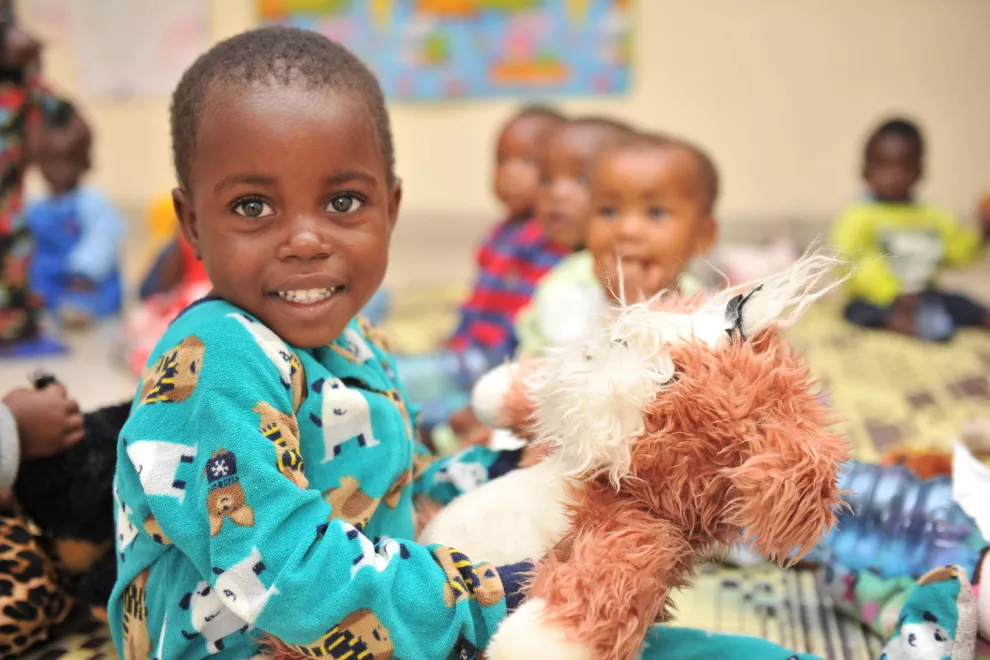Play is fundamental to every child’s learning and development. As a parent you have a key role in all of this – both in the time you can bring to playing with your children and which toys, games and activities you select.
As you do so, have you considered whether you might be, even unconsciously, contributing to reinforcing stereotypes about gender, disability, race, ethnicity or culture? How you parent your child at home contributes to the socialization of children (how they learn to behave according to social norms), and play is one area where this happens.
For example, thinking about gender stereotyping, girls might be encouraged to play with dolls indoors while boys are encouraged to play outside. While this teaches girls to be caregivers from an early age, it can also impede their ability to develop other types of cognitive, physical and social skills. Boys are often given toys such as guns to play with and encouraged to participate in physical, and often more aggressive, activities with other boys or male caregivers, which can promote unhealthy expressions of masculinity.
Children with disabilities, as well as children from marginalized groups, may not be represented at all in the toys your children play with or the books they read, or they might be shown in stereotypical ways that has a harmful impact on them.
As a parent, you have a direct influence on your little one and the ability to prevent this kind of bias while you engage in playful learning with your child. Here are some ways you can encourage gender-equitable and inclusive playtime at home.
- Encourage school attendance and give girls and boys equal and adequate time to play and participate in household chores, regardless of gender.
- Make sure your children play with toys and games that develop the complete set of social and cognitive skills. For example, look for games that develop literacy, numeracy, spatial, cognitive and social skills or toys that stimulate creativity and problem-solving.
- Help your children read books and watch media that tell inclusive and positive stories about children in all their diversity, that celebrate different cultures, include children with disabilities, and provide positive portrayals of gender roles.
- Have your children play with toys and games traditionally associated with the opposite gender. Both girls and boys can play with dolls and cooking toys as well as engage in physically active games and sports. Toys and games should ultimately be tools that enable children to become agile and adaptive learners, and teach skills such as creativity, communication and problem solving.
- Avoid toys and games that deliberately encourage gender stereotypes, such as pink packaging, unicorns, rainbows and hearts for girls versus blue packaging, robots, spaceships and toolboxes for boys. Ensure that toys and games given to children are inclusive and diverse in their representation.
- Be aware of the way marketing and advertising can reinforce harmful gender norms and exclude children. Choose toys, books and games that send positive messages to your children.
- Prevent children from playing with guns and violent toys, including overtly violent or sexualized digital games. The digital gaming industry is a fast-growing sector which is also deeply gender-biased, sexualized, and condoning of violence in much of its content. These kinds of games, often played by children and targeted at adolescents, have the capacity to deepen gender biases and promote unhealthy and harmful behaviour and attitudes in future generations.
- Replace or supplement digital games with constructive physical activities, such as sports and outdoor games. Physical activity is essential for the healthy development of all children, no matter their gender, and children should be encouraged to engage in physical play as early in life as possible through sports, going to the playground or playing games with their friends. As a parent, try to support a full range of cognitive and creative skills for your children and ensure that girls and boys receive equal play time, indoors and outside.
- Encourage your child to translate anger and frustration into problem-solving, positive communication and constructive physical activity rather than use aggression or bullying.
And remember, play builds the relationship and bond between parent and child so make sure to savour every moment you have together!.






